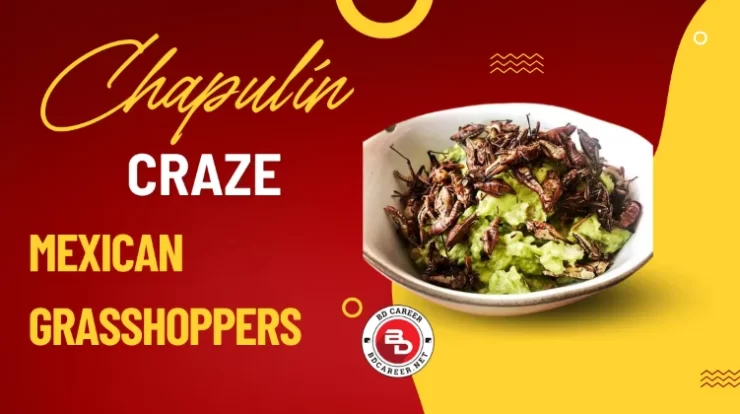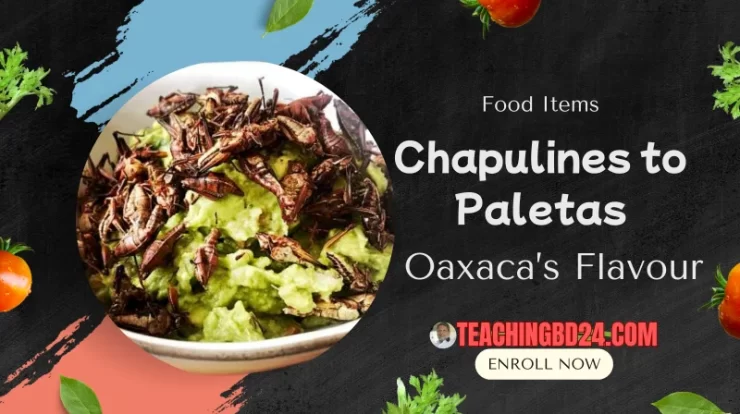
In recent years, the world has been witnessing a growing awareness around sustainable eating and the need to reduce the environmental footprint of food production. Among the many emerging trends, edible insects have gained attention as a promising alternative source of protein. In Mexico, this shift reconnects deeply with tradition, where chapulines, grasshoppers, have long been part of the culinary landscape. The chapulín craze is more than just a fad. It reflects a convergence of cultural heritage, nutritional wisdom, and ecological necessity, positioning grasshoppers as Mexico’s protein of the future.
Contents
- Historical and Cultural Significance
- Nutritional Benefits of Chapulines
- Environmental Advantages
- The Rise of Chapulín Popularity
- Economic and Social Impact
- Sustainability Spotlight – The Green Side of Eating Bugs
- Culinary Revolution – Chapulines Go Gourmet
- Challenges and Public Perception
- Future Prospects
- Conclusion
Historical and Cultural Significance
Chapulines hold a revered place in Mexico’s indigenous food heritage. Long before modern agriculture, pre-Hispanic civilisations such as the Aztecs included insects like Mexican grasshoppers as staple components of their diet. Chapulines were valued for both their abundance and nourishment, often harvested from fields and consumed roasted, fried, or mixed into various traditional dishes.
This insect was not only sustenance but a cultural symbol. The word “chapulín” comes from Nahuatl, the language of the Aztecs, demonstrating the ingredient’s indigenous roots. Regions like Oaxaca, Puebla, and Morelos have preserved this tradition, where chapulines are still enjoyed as street snacks, integrated into salsas, or used to garnish tacos and other local specialities.
Nutritional Benefits of Chapulines
Chapulines pack a powerful nutritional punch, making them an excellent protein source. Their protein content can range from 55% to 70% by dry weight, rivalling traditional meat sources like beef and chicken. They also contain essential amino acids, healthy fats including omega-3 and omega-6 fatty acids, and are rich in vitamins (B12, riboflavin) and minerals such as iron, calcium, and zinc.
Compared to conventional protein sources, chapulines are leaner and provide nutrient density that supports muscle health, energy metabolism, and immune function. Their high fibre content, mainly due to their exoskeleton, aids digestion and gut health, delivering benefits often overlooked in meat-heavy diets.
Environmental Advantages
One of the most compelling reasons the global sustainability movement embraces insects like chapulines is their minimal environmental impact. Grasshopper farming requires significantly fewer resources than traditional livestock agriculture:
- Water Efficiency: Raising chapulines uses a fraction of the water necessary for beef or pork production.
- Land Use: They thrive in small spaces and do not require expansive grazing land or feed crops.
- Greenhouse Gas Emissions: Insect farming generates far lower methane and carbon dioxide emissions compared to ruminant animals.
- Feed Conversion: Grasshoppers efficiently convert feed into protein, often outperforming cattle and other livestock.
These advantages position chapulines as an environmentally responsible protein source that can help reduce the strain on natural ecosystems and combat climate change.
The Rise of Chapulín Popularity
While chapulines have always been a Mexican staple in certain regions, their popularity is surging now due to renewed interest in gastronomy and sustainable foods. Chefs across Mexico are innovating and incorporating chapulines into modern cuisine with impressive creativity.
In urban areas like Mexico City, gourmet restaurants serve chapulines fried with chilli and garlic, sprinkled on guacamole, or transformed into gourmet snacks paired with craft beers. Street vendors continue to attract crowds offering traditional roasted chapulines with lime and salt, bridging the gap between indigenous tradition and contemporary tastes.
Moreover, chapulines are making their mark abroad. International food festivals and specialty markets feature chapulines as exotic delicacies, introducing them to global audiences keen on adventurous and sustainable foods.
The commercialisation and farming of chapulines present significant socio-economic opportunities, particularly for rural communities. Small-scale farming and harvesting of grasshoppers can create income streams for indigenous and local populations, empowering them through sustainable entrepreneurship.
By fostering native food systems, chapulines contribute to food sovereignty, ensuring communities control their own food production and consumption. This is especially important in regions vulnerable to hunger and limited access to conventional animal proteins due to cost or resource scarcity.
Furthermore, scaled farming of chapulines can reduce dependency on imported or industrially produced meats, making diets more resilient and affordable.
Sustainability Spotlight – The Green Side of Eating Bugs
Now, let’s talk about the elephant (or grasshopper) in the room: sustainability.
Raising cows is expensive not just in money, but in land, water, and greenhouse gases. Beef production is one of the largest contributors to climate change, and as the global population marches toward 10 billion by 2050, the world is scrambling for efficient protein sources.
Enter insects.
- Land use: Insects need a fraction of the space cattle require.
- Water consumption: Grasshoppers need barely any compared to beef or pork production.
- Feed conversion: Insects convert feed into protein about 10x more efficiently than cows.
- Emissions: Nearly negligible greenhouse gases compared to traditional livestock.
For Mexico, where chapulines are already part of the culinary DNA, this isn’t a future shock. It’s just scaling something that’s been quietly sustainable for centuries.
Culinary Revolution – Chapulines Go Gourmet
Let’s get real, nobody wants to save the planet by eating something that tastes like cardboard. Luckily, chapulines are a flavour bomb.
Traditionally toasted with garlic, lime, and chile, they offer a salty, tangy, slightly smoky crunch that’s both satisfying and addictive. Now chefs are taking that base flavour and running wild with it:
- Chapulín Tacos – With avocado, pickled onions, and a creamy chipotle sauce.
- Guacamole with Chapulín Dust – Adds a savoury umami kick to a Mexican classic.
- Chapulín Chocolate Bark – Sweet meets savoury in a surprisingly delicious dessert.
- Chapulín Sushi – The bold meet the beautiful in a crunchy sushi roll topping.
Restaurants from Oaxaca to New York are experimenting, and food influencers love it because, let’s face it, nothing gets clicks like a daring but tasty new trend.
Challenges and Public Perception
Despite their benefits, chapulines and edible insects in general face challenges in overcoming cultural biases and misconceptions. In many societies, insects are associated with dirtiness or pest status, creating reluctance to embrace them as food.
In Mexico, although chapulines have a regional fan base, there remains hesitation among traditional consumers. Widespread acceptance requires educational efforts highlighting their nutritional and environmental advantages, alongside culinary integration that appeals to modern palates.
Marketing campaigns, cooking demonstrations, and media exposure work to normalise insect consumption and reduce the “yuck factor.” Leveraging Mexico’s rich indigenous heritage also builds pride around the practice, encouraging younger generations to reconnect with this ancestral food.

Future Prospects
As Mexico confronts food security challenges in the face of climate change and population growth, chapulines offer a resilient, scalable solution. Their ability to thrive on less and produce more protein aligns with national goals for sustainable development.
Government initiatives, along with private and academic research, are promoting chapulín farming techniques and regulations to ensure food safety and scalability. This groundwork paves the way for chapulines to enter mainstream grocery stores, processed snacks, protein bars, and even flour used in baking and supplements.
International interest is also growing, with Mexico positioned as a leader in edible insect innovation, blending tradition with modern food science. The chapulín craze is likely to expand further, transforming perceptions and food systems.
In addition, our website features a wide selection of nixtamalized tortillas, Mexican Pudding, tamales, Mexican and Japanese flavors in sushi rolls, Baja Med food, Mexican Cheese, and other food items. If you would like to explore more reviews beyond these, we invite you to visit.
Conclusion
Chapulines represent a fascinating intersection of Mexican tradition, nutrition, ecological necessity, and culinary innovation. From ancient indigenous roots to modern gourmet tables, grasshoppers embody a protein source that is environmentally sustainable, economically valuable, and culturally authentic.
The surge in chapulín consumption does more than offer an alternative protein. It reconnects Mexico with its past and provides a blueprint for the future of food. As the world seeks sustainable ways to feed growing populations, Mexico’s chapulín craze stands out as a delicious, nutritious, and eco-friendly model for tomorrow’s protein.





